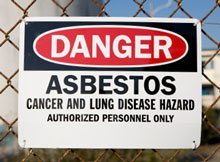Decoding Pleural Mesothelioma: Insights from a Ten-Year Study

Recently, a group of researchers studied 169 patients with pleural mesothelioma over ten years. They wanted to gain a deeper understanding of mesothelioma and its effects on people.
Pleural mesothelioma is a serious type of cancer that affects the lining of the lungs. It is caused by asbestos exposure. Doctors have found that the outlook for people with this cancer depends on different factors. They include the type of cancer cells and how far the cancer has spread in the body. A group of researchers studied 169 patients with pleural mesothelioma over a period of 10 years to learn more about this disease and how it affects people.
A Look at ‘Performance Status’
The researchers used a special computer program to look at the medical records. They looked at 169 patients who had pleural mesothelioma. They talked to doctors who specialize in cancer treatment. And they looked at X-ray images to learn more about the patients’ conditions. Most of the patients were men, and their ages ranged from 44 to 93 years old.
The researchers found that there were different levels of how well the patients were feeling and able to do daily activities. This is called “performance status.” Some patients felt okay (16%). But most patients had more difficulty. Almost 80% felt sick or very sick.
They also found that 70% of the patients had the cancer only in their chest area. While 30% had the cancer spreading to other parts of their bodies. It spreads to the chest wall, diaphragm, and even organs like the liver, spleen, and adrenal glands. Some patients even had cancer in their bones or brain.
A Closer Look at a Serious Disease
The researchers found that in most cases, they were able to confirm the diagnosis by looking at tissue samples. When they looked closer, they found that 63% of the patients with a specific type of cells called “epithelioid” survived longer. They survived around 15 months on average. The other 37% with a different cell type called “sarcomatoid or biphasic” survived for about 12.6 months on average.
For treatment, some patients received a combination of different therapies. This is called a multimodal approach. However, about one-third of the patients received the best supportive care. This usually meant they had a worse performance status and couldn’t handle the more complex treatments.
This study gives us important information about pleural mesothelioma. It shows us that this type of cancer can be very aggressive. At least 30% of patients have the cancer spread to other parts of their bodies. It also suggests that patients with the epithelioid type of cells might have slightly better outcomes. Understanding these findings can help doctors make better decisions about how to treat patients with pleural mesothelioma in the future.
Source
Qasim Gohir, Julia Mcadam, Emma Crawford, Olivia Bosher, Muhammad Saleem, Koottalai Srinivasan, Harmesh Moudgil. European Respiratory Journal Sep 2023, 62 (suppl 67) PA3444; DOI: 10.1183/13993003.congress-2023.PA3444. https://erj.ersjournals.com/content/62/suppl_67/PA3444





